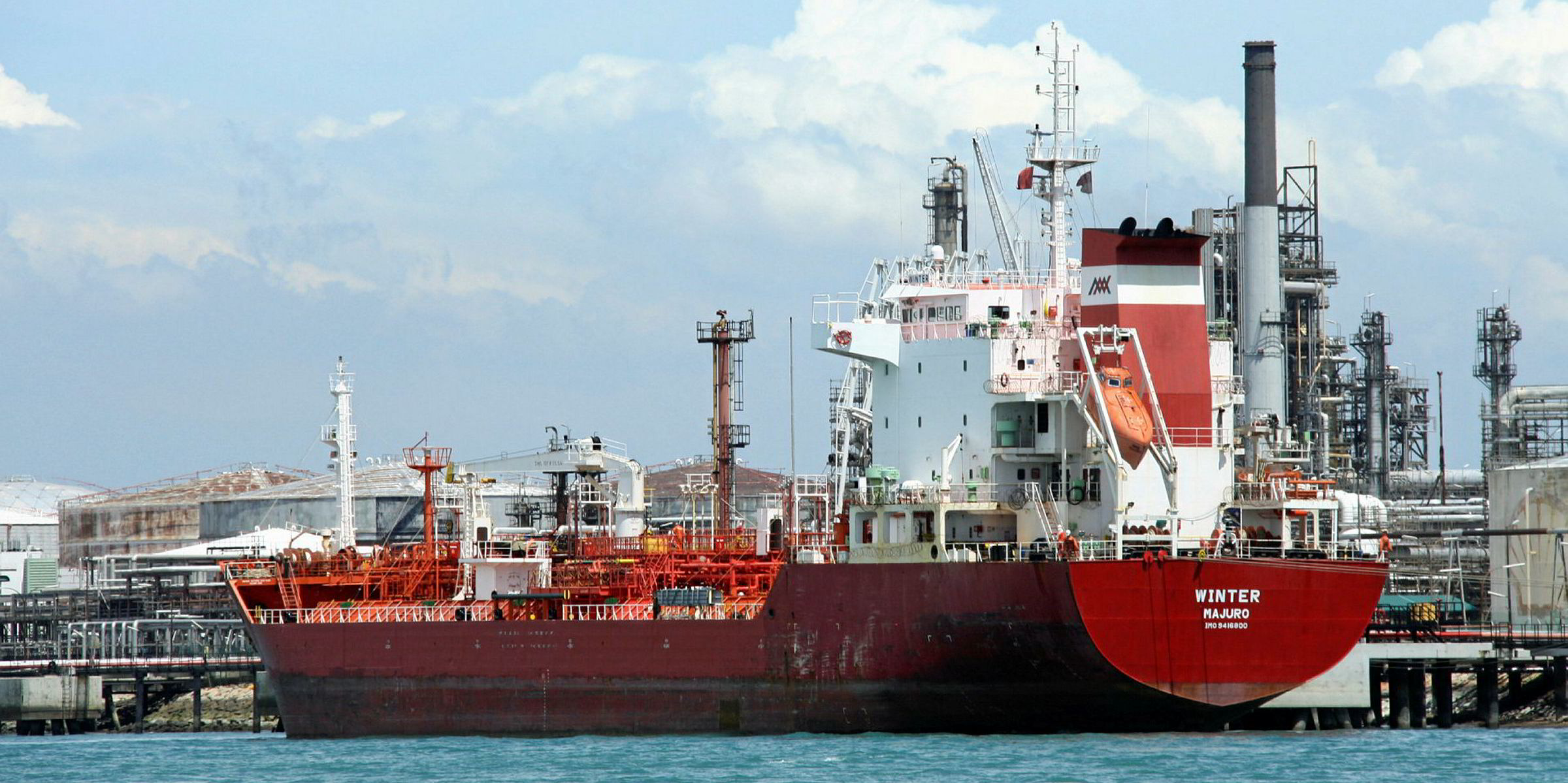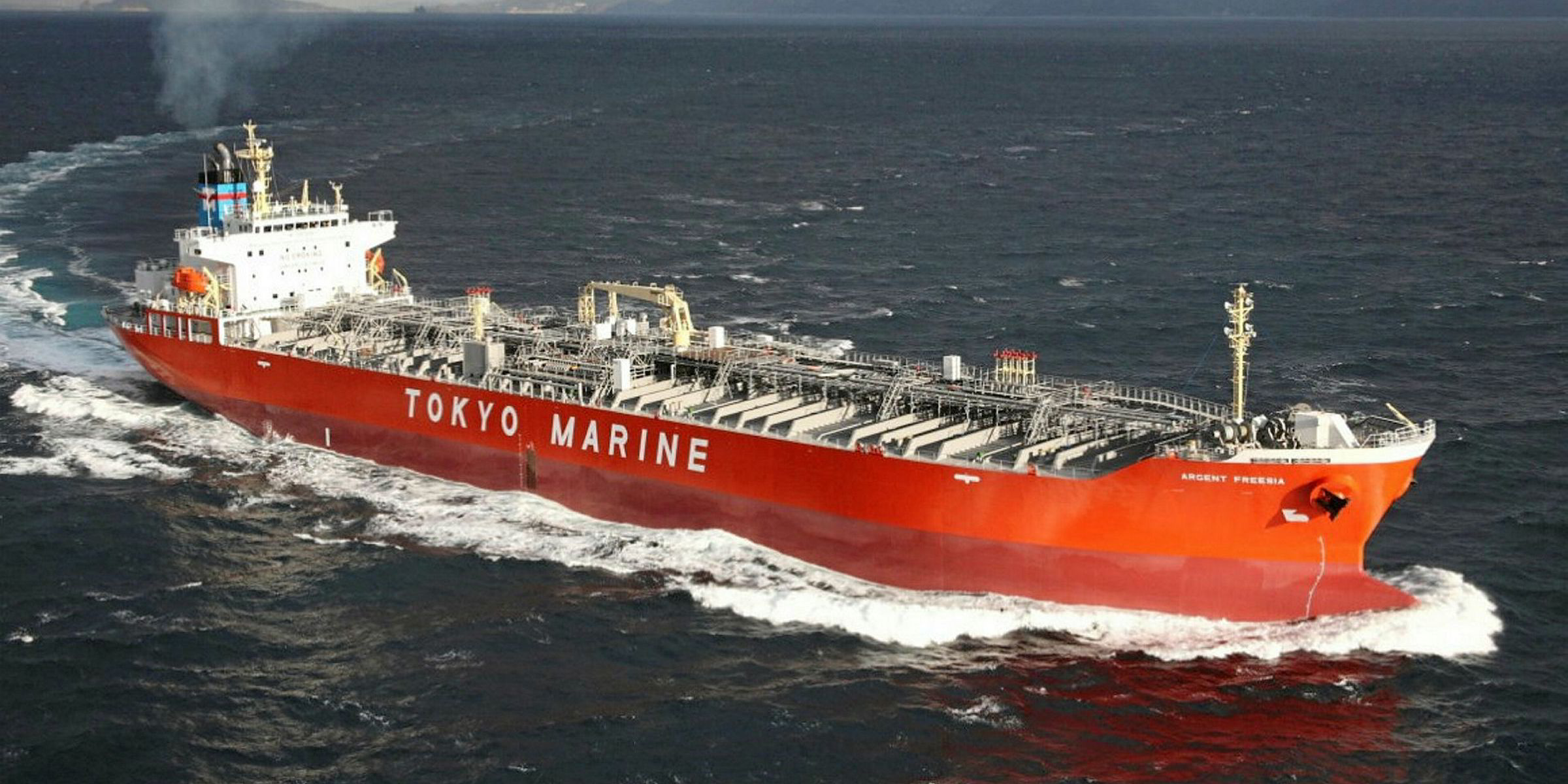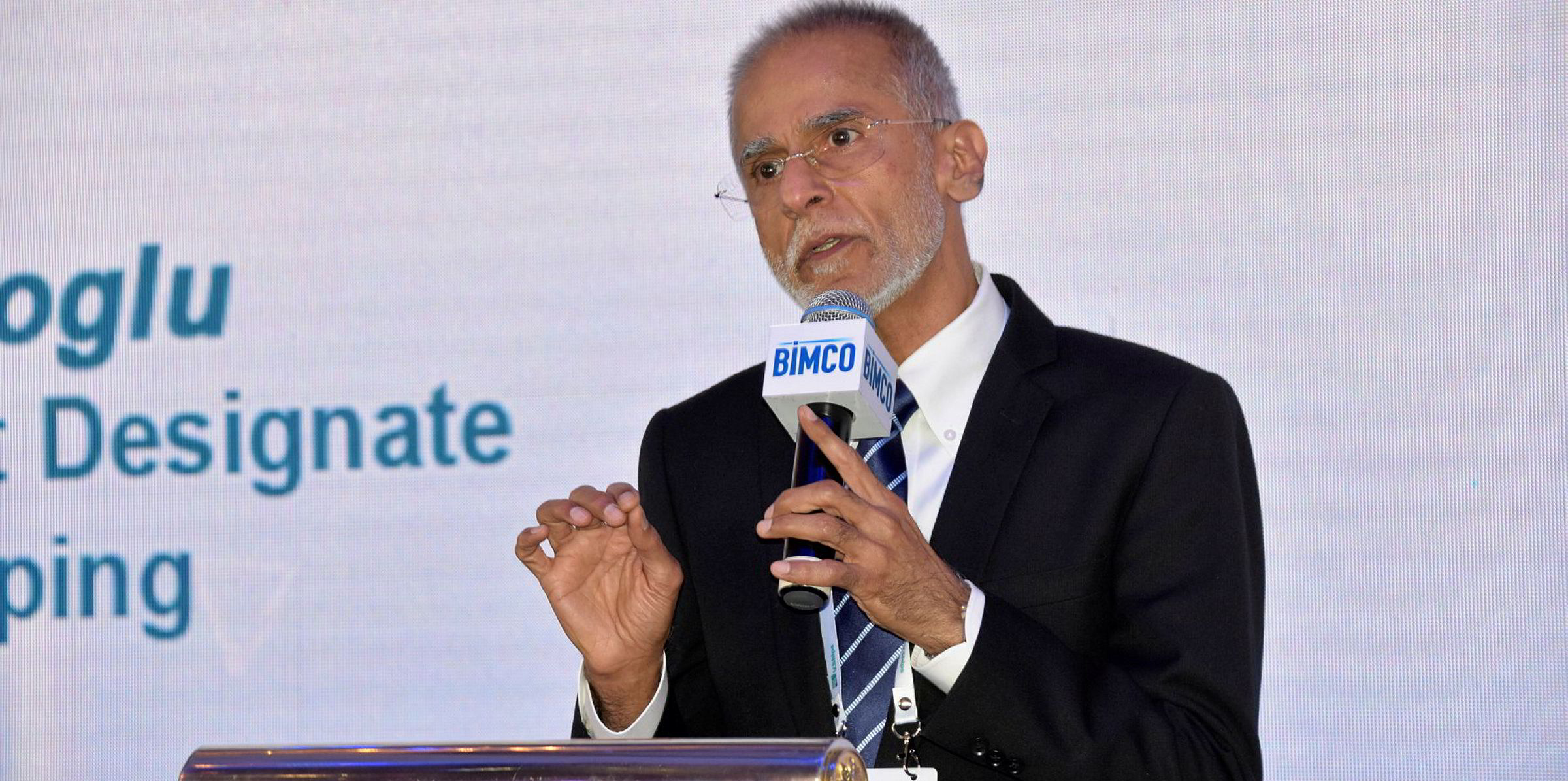Only 2% of the global chemical tanker fleet has opted to install scrubbers to meet the IMO 2020 regulatory requirement, according to Drewry associate Hugo Finlay.
Limited onboard space and lackluster scrubber economics for the vessels are restricting their uptake, he explains.
Based on figures provided by the consultant, 21 of the world’s 4,485 chemical tankers are already fitted with exhaust gas cleaning systems, while scrubber orders have been placed for another 76.
A total of 18 chemical tankers have dual-fuelled engines, but the rest 4,370 vessels are expected to consume IMO-compliant fuels such as marine gasoil or low-sulphur fuel oil (LSFO), Finlay said.
In general, chemical tankers are of 55,000 dwt or smaller, so their absolute bunker consumption volumes are much smaller than larger oil tankers.
Longer payback periods
“Fuel consumption of chemical tankers is small … so the payback periods are much longer [than those of larger vessels],” Finlay said during the Chemical & Product Tanker Conference.
“There is also no space,” Finlay added. “Retrofitting [is] costly and often not practical.”
While installing scrubbers on newbuilding vessels could “make sense” in some cases, there has been a general lack of newbuilding investments in this sector over the past few years, according to Finlay.
Data from Clarksons shows the chemical tanker orderbook amounts to 148 ships of 2.9 million dwt, according for just 6% of total fleet.
Manish Jain, Womar Logistics’ director of operations, shared similar observations on the preference of chemical tanker owners.
“In our segments, the majority solutions will be LSFO, or low-sulphur fuel oil,” said Jain, whose company manages several pools of chemical tankers.
“Scrubber installation won’t be a loss” financially for owners, but there is uncertainty over the lengths of payback periods, Jain added.
Impact on bottom lines
The need for most chemical tankers to use the IMO-compliant fuels — which are expected to be more expensive than high-sulphur fuel oil (HSFO), the prevalent type of bunker fuel currently — could potentially hit vessel operators hard, according to Finlay.
“[There is a] limited ability [of them] to pass on additional costs,” he added.
Assuming a $300-per-tonne price spread between HSFO and LSFO and charterers willing to take on 50% of incremental fuel costs, Finlay estimated vessel operators would face an additional expense of $1,800 per day.
“That’s a substantial figure compared with the already low charter rates for chemical tankers,” he said.
Still, the limited number of newbuilding deliveries and rising seaborne trade volume could mitigate the negative impact from more fuel expenses, according to Finlay.
Drewry data suggests global seaborne chemical trade reached 249 million tonnes in 2018, including 118 million tonnes of organic chemicals, 34 million tonnes of inorganic chemicals, and 80 million tonnes of vegoils and fats.
“Everything is expected to grow by 2% in the next four to five year,” Finlay said.






